How to Keep Yellow Jacket Wasps Away: 14 Steps (with Pictures)
Edited by 1Youare8, Mop and Bucket, Maluniu, Writelf and 7 others
Two Methods:Remove or Prevent Yellow Jackets Without KillingKill Yellow Jackets
Finding a way to get rid of them without chemicals is challenging because you want to get rid of them once and for all. So what can you do to get rid of wasps naturally without harming your family or the environment? Here are some unusual ways to do the job. These methods are not scientifically proven but the people who have used them have seen good results.
Method 1 of 2: Remove or Prevent Yellow Jackets Without Killing
-
Keep food sources, especially protein, indoors. Yellow jackets feed primarily off of protein, so be sure to keep those turkey sandwiches indoors and enjoy the postprandial glow outside instead of the other way around.
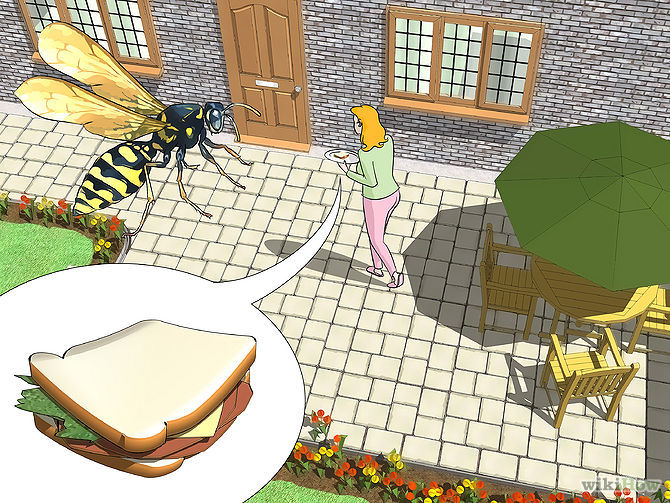
- Food sources include your pet's food as well. Make sure you find an effective way to store your pet food (if you do store it outside) so that any roaming yellow jackets can't make a quick feast out of your furry friend's treat.
-
Don't leave sugar out. In the spring and summer, yellow jackets eat primarily protein. In the fall, yellow jackets begin to incorporate sugars into their diet. Sugar can increase the lifespan and reproductive function of many predatory wasps, making it a particularly dangerous thing to keep around.[1]
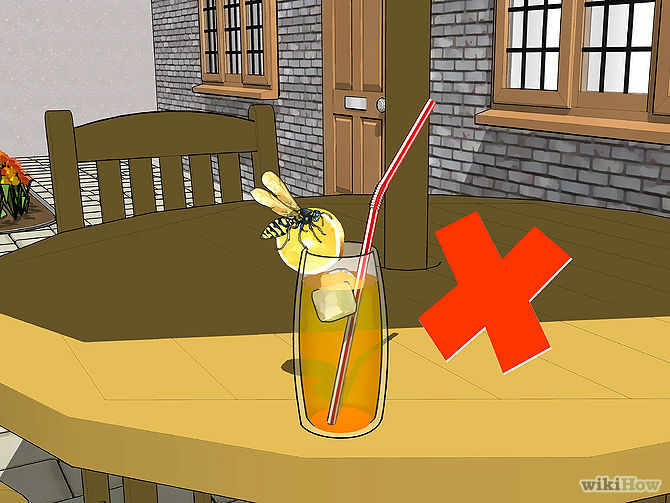
- If picnicking, try to keep sweets such as sodas and desserts indoors.
- Hummingbird feeders, essentially sugar-water dispensers, can be especially problematic. Investigate ways to kill or remove the entire colony before you put up a lot of sugar-water for them to gorge on.
-
Put out sliced cucumbers. If you have to put out food (we do not advocate blowing off 4th of July on account of some pesky wasps), one unusual wasp repellent you can try is cucumber. This vegetable has an acid property that wasps don't like. Cut up a few slices and leave around your picnic or BBQ area. They stay away and you can enjoy your outdoor activities without fear of getting stung.
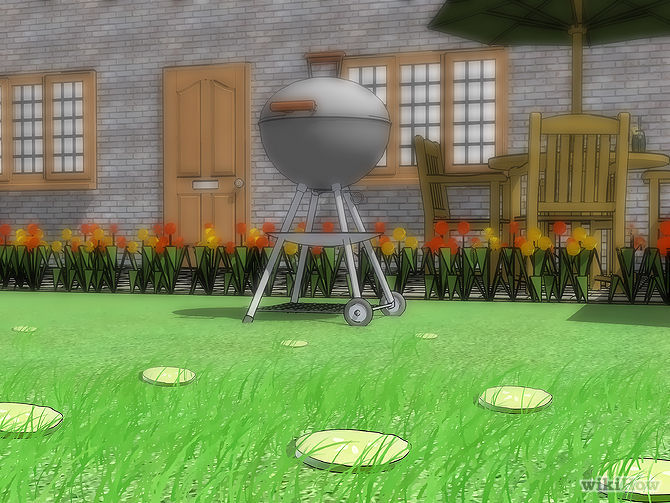
-
Seal your garbage cans tightly. Yellow jackets are primarily hunters, but they can morph into greedy little scavengers if the prize is worth it. An open or easy-to-access garbage can is just that.
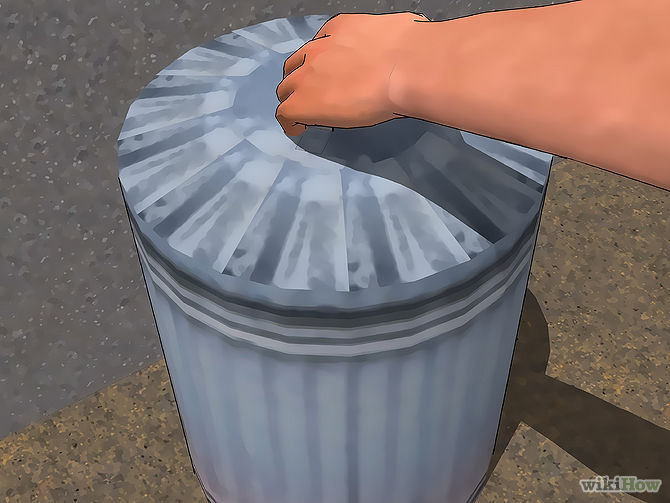
- Remember that sugars and proteins are especially pleasing to yellow jackets, so consider isolating those into separate bins to be extra sure. It's not necessary if you take care to lock up your entire garbage heap, but it may give succor to those fiercely afraid of yellow jackets.
-
Hang up a crumpled brown paper bag. Wasps are territorial so they will not make a nest where one already exist. To give the illusion of a wasp nest crumple up a small brown grocery bag, attach a string, and hang near your doors. They cannot tell if it's truly a nest but they seem to trust what they see. Their instincts will kick in and they will go away.

-
Seal up the sides of your home and shore up your awnings. Awnings and loose siding on your home is a safe, enticing place for yellow jackets to shack up and make a home. Seal these places properly to prevent a yellow jacket infestation from making its way — quite literally — into your home.
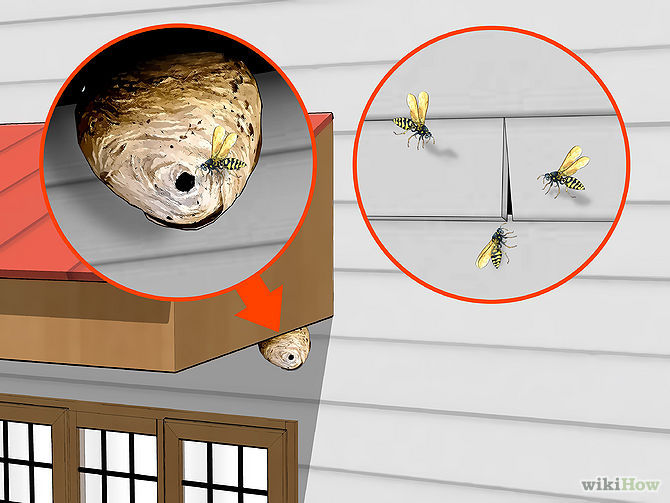
- Infestations of yellow jackets into your home will most likely require the expertise of a professional exterminator, and will cost you a pretty penny while you're at it. If you're the patient type, wait for winter. Cold enough weather will kill off the entire colony, after which time you can remove the wasp nest and seal up your home properly.
-
Don't do these things. In addition to the advice above, don't do any of the following thing, as they are most likely counterproductive:
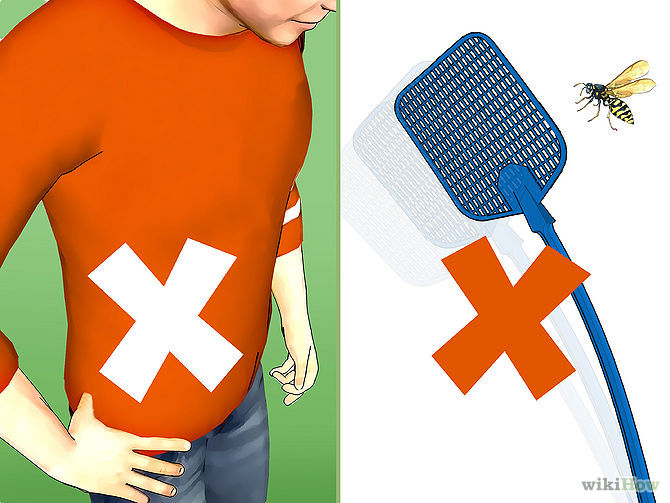
- Don't wear bright colors. The yellow jackets could think that you're a flower and be attracted to you.
- Don't swat at yellow jackets. Killing one yellow jacket may be cathartic, but it also causes a pheromone to be released which attracts other wasps. Out of the frying pan and into the fire.
- Don't wear overly aromatic perfumes. Yellow jackets are attracted to sweet smells.
Method 2 of 2: Kill Yellow Jackets
-
Spray them with soap and water. Old fashioned soap and water is the first natural repellent to use. Spray the soapy mixture on the wasp and their nest. The soap will stick to their wings and weigh them down. Eventually they will suffocate.
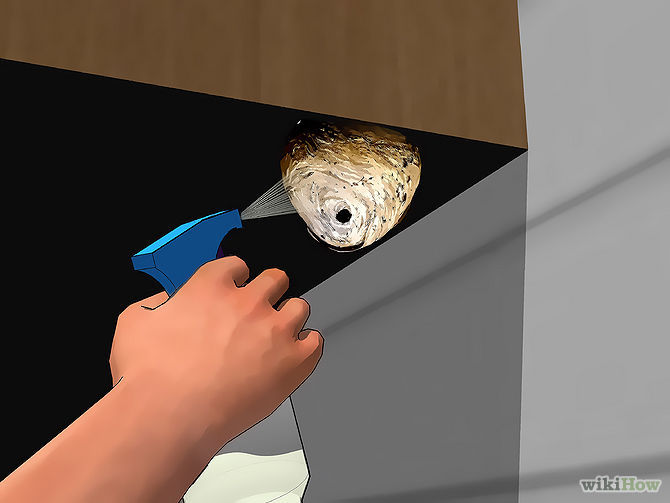
- Line your doors and windows with soap to keep the wasps away.
- If the yellow jackets have built a nest in the ground, pour soapy water into the hole at night and preferably during cooler temperature. The entire colony should die. Be sure to wear protective clothing in case the yellow jackets are feeling especially murderous.
-
Get a non-toxic wasp trap and set it out early in the season. Non-toxic wasp traps don't use any chemicals to kill wasps caught inside. Instead, they rely on asphyxiation, drowning, starvation, or exhaustion to kill the yellow jackets. Not exactly the most humane, but this is war, isn't it?

- Place the trap two to four feet above the ground and as far away from human habitation as possible.[2] This is the ideal scenario.
-
Build a trap of your own using a large soda bottle. Cut off the top 1/3 of a 2-liter soda bottle. Turn the top around (so that it's facing the bottom of the soda bottle instead of the top) and staple it to the remaining soda bottle. You should have a kind of minnow trap with the inverted neck as a funnel.
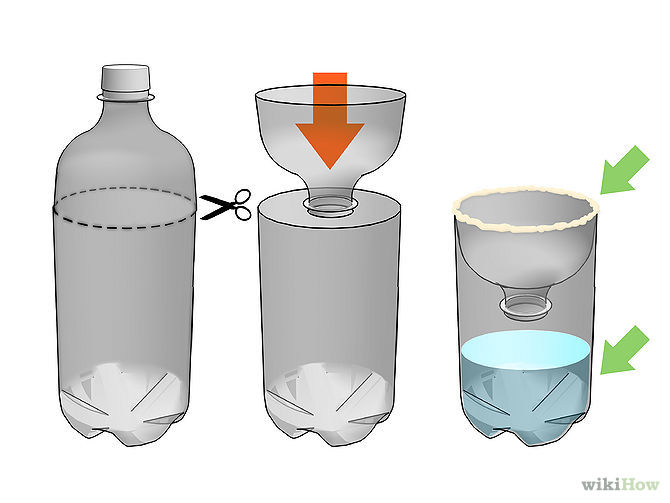
- Fill the soda bottle about halfway full with soapy water. Coat the neck of the soda bottle with sweet jam. The yellow jackets will try to get to the jam and accidentally fall into the bottle, from which it is very difficult to get out.
- Empty and refill the soda bottle frequently. Dead yellow jackets can form a barrier that other caught yellow jackets can rest on, possibly escaping. Empty the contents of your homemade trap frequently to cut down on this risk.
-
Cover the entrance and exit of the yellow jackets's nest with a powdered insecticide. The yellow jackets will crawl through the insecticide in order to get into their nest, carrying the insecticide into the nest and infecting the other members of the colony. Coating both the entrance and exit of their nest will increase the likelihood of extermination.
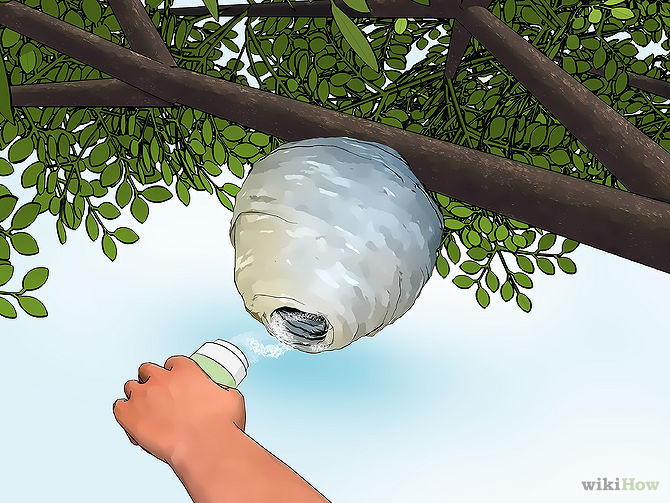
-
Dispose of an aerial nest with a big cloth bag. During nighttime, when the yellow jackets are drowsy, sneak up to the aerial nest and quickly envelop it in your cloth bag. Make sure to tie off the bag so that none of the wasps may escape. Break the wasp nest off from its mooring and submerge it completely in water to drown the yellow jackets. Use a couple rocks to help keep the nest submerged.
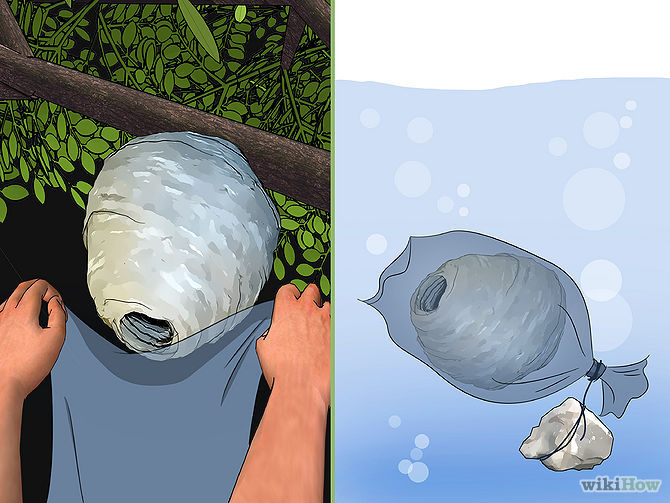
-
Dispose of an underground nest by sealing off all entry and exit points. Once you are sure you have located all of the possible entry and exit points of the nest, approach them during the nighttime when the wasps are drowsy. Place a large bowl over any entrances and exits, working them into the ground so that they create a kind of seal.
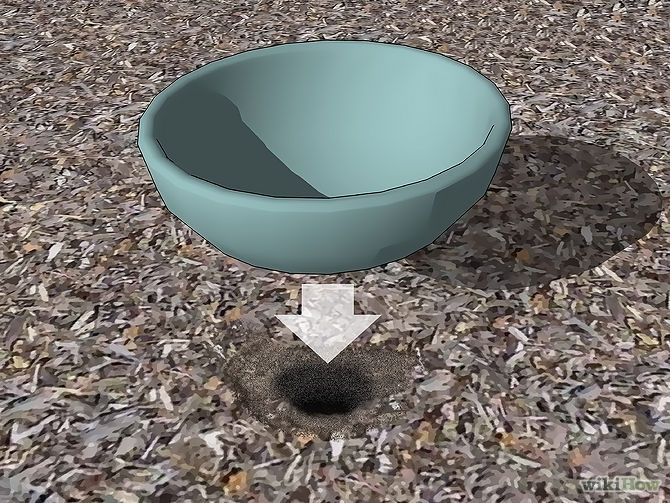
- Leave the bowls over the entry and exit points for approximately two weeks. The yellow jackets will be disoriented but unable to leave their underground prison. They should die off after the two weeks, if not relocate to another more accessible nest.
-
Wait it out. Wasps cannot survive the harsh winter months, during which time they regularly die off. If you discover a yellow jacket nest during the end of summer/fall, consider waiting for the first frost to kill off your pesky yellow jackets for you. You won't risk getting stung and, if you can stand it, you won't have to worry with the headache of playing exterminator for weeks on end.
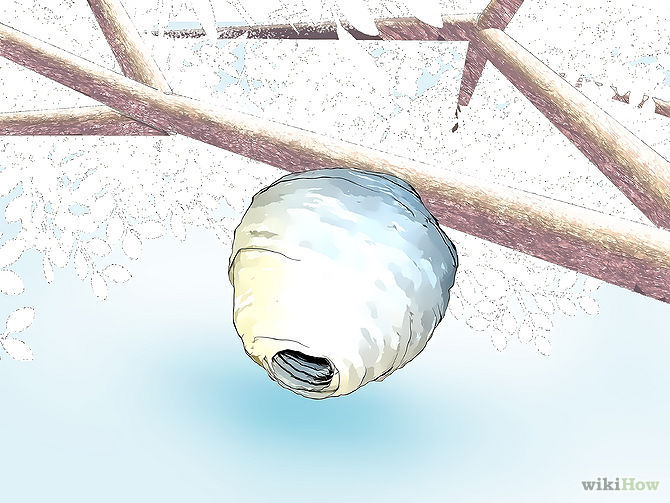
Add your own method
Warnings
- Remember that wasps sting and if you are allergic to them or bees, keep right away from them and let someone else do it.
